
Tony Hawk's Pro Skater, released as Tony Hawk's Skateboarding in the UK, Australia, New Zealand, and parts of Europe, is a 1999 skateboarding video game developed by Neversoft and published by Activision. It was released for the PlayStation on September 29, 1999 and was later ported to the Nintendo 64, Game Boy Color, Dreamcast, and N-Gage.

Phantasy Star Online is an online role-playing game (RPG) developed by Sonic Team and published by Sega in 2000 for the Dreamcast. It was the first online RPG for game consoles; players adventure with up to three others over the internet to complete quests, collect items and fight enemies in real-time action RPG combat. The story is unrelated to previous games in the Phantasy Star series.

Donald Duck: Goin' Quackers is a platform video game developed and published by Ubi Soft for various consoles and Windows-based personal computers. A different game with the same title was first released for the Game Boy Color, as well as on Game Boy Advance, the latter being given the title Donald Duck Advance.
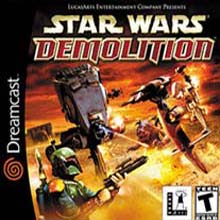
Star Wars: Demolition is a vehicular combat game set in the Star Wars universe created by Luxoflux and LucasArts using the Vigilante 8 game engine. The premise of the game is that the Galactic Empire have banned Jabba the Hutt's podraces, so Jabba creates a more life-threatening vehicular combat contest.

Star Wars Episode I: Jedi Power Battles is an action Star Wars video game set during the time frame of Star Wars: Episode I – The Phantom Menace. The game was first released for the PlayStation, and afterwards for the Dreamcast and the Game Boy Advance.
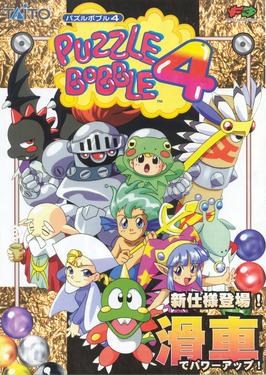
Puzzle Bobble 4 is the third sequel to the video game Puzzle Bobble and is the final appearance of the series on the PlayStation and the only appearance of the series on the Dreamcast.
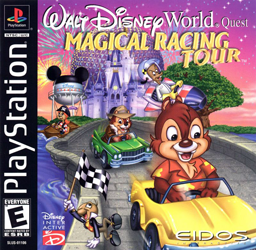
Walt Disney World Quest: Magical Racing Tour, sometimes mislabeled as Disney MT Racing or Walt Disney World: Magical Racing Quest, is a 2000 go-kart racing video game based on attractions at the Walt Disney World Resort. Players compete in races on tracks inspired by attractions such as the Haunted Mansion, Pirates of the Caribbean, Space Mountain and Big Thunder Mountain Railroad to acquire missing parts for the park's fireworks machine, which was accidentally destroyed by Chip 'n' Dale while they were gathering acorns. The game was developed by Crystal Dynamics and published by Eidos Interactive. The Game Boy Color and Dreamcast versions were developed by Prolific Publishing.
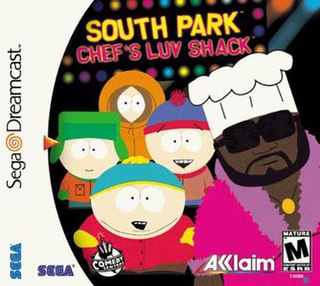
South Park: Chef's Luv Shack is a 2D game show-style party video game and is a sequel to the 1998 video game South Park, itself based on the American animated sitcom of the same name. Developed by Acclaim Studios Austin and published by Acclaim Entertainment, it was released in 1999 for the Dreamcast, Microsoft Windows, PlayStation and Nintendo 64. Its gameplay involves playing minigames and the ability to play against other players in a challenge for the most points. It also involves trivia questions about South Park and other topics.
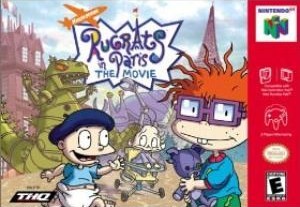
Rugrats in Paris: The Movie is a video game based on the 2000 animated movie of the same name. The game follows the adventures of the Rugrats in a European theme park. A console version of the game was released in 2000, for the PlayStation, Nintendo 64, and a handheld version for Game Boy Color. A version for Microsoft Windows was later released in 2001. The console version's gameplay is similar to Rugrats: Studio Tour, but Paris’ attractions sometimes have minigames too. The handheld gameplay is a side-scrolling platformer. The Windows version's gameplay is an adventure game in which the player must find Chuckie's Wawa Bear.

Chicken Run is a platform-stealth based 3-D platform video game based on the 2000 film of the same name. The game is a loose parody of the famous film The Great Escape. The Game Boy Color version is a 2D isometric puzzle-solving game. The game's plot is about chickens escaping from a farm from their evil owners and fighting for freedom.
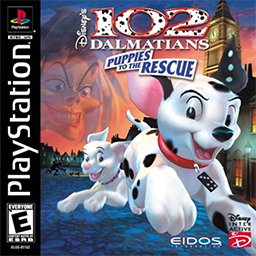
Disney's 102 Dalmatians: Puppies to the Rescue is a platform video game developed by Toys for Bob and published by Eidos Interactive for Microsoft Windows, PlayStation, Dreamcast and Game Boy Color. It is loosely based on the live-action Disney movie 102 Dalmatians.

F-1 World Grand Prix, developed by Paradigm Entertainment, is a Formula One racing game/sim first released in 1998 for the Nintendo 64 game console and to later platforms including the Sega Dreamcast, Microsoft Windows, Sony PlayStation, and Game Boy Color. The Nintendo 64 version is based on the 1997 Formula One season, featuring each of the 17 circuits from the season and all 22 drivers, with the exceptions of Jacques Villeneuve and the MasterCard Lola team.
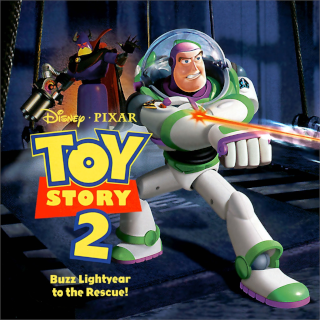
Toy Story 2: Buzz Lightyear to the Rescue! is a platform game developed by Traveller's Tales and published by Activision and Disney Interactive. Based on Disney/Pixar's 1999 computer animated film Toy Story 2, It was released for the Nintendo 64, PlayStation, Microsoft Windows, and Macintosh in late 1999, while a Dreamcast version followed in 2000. The computer versions were released under the title Disney/Pixar's Action Game, Toy Story 2. A different version, a side-scrolling platform game titled Toy Story 2, was also released for the Game Boy Color in 1999.

Wild Metal Country is an action video game developed by DMA Design. The game was published by Gremlin Interactive and released for Microsoft Windows in May 1999. A Dreamcast port, known as Wild Metal, was released in February 2000 by Rockstar Games, which later also re-released the Windows version.

Disney's Dinosaur is a 2000 video game published by Ubi Soft, and functions as a tie-in to the Disney film of the same name.

Spider-Man is a 2000 action-adventure game based on the Marvel Comics character of the same name. It was developed by Neversoft and published by Activision for the PlayStation. The game was later ported by different developers to various systems, including the Game Boy Color and Nintendo 64 that same year, as well as the Dreamcast and Microsoft Windows in 2001.

Toy Story is an American media franchise owned by The Walt Disney Company. It centers on toys that, unknown to humans, are secretly living, sentient creatures. It began in 1995 with the release of the animated feature film of the same name, which focuses on a diverse group of toys featuring a classic cowboy doll named Sheriff Woody and a modern spaceman action figure named Buzz Lightyear.

Disney's Aladdin in Nasira's Revenge is a platform game based on the Aladdin franchise which was developed for the PlayStation and PC by Argonaut Games and distributed by Disney Interactive in 2000. In the game, Aladdin, Abu and Jasmine fight against Jafar's sister Nasira who wants to bring him back to life. Nasira's Revenge received generally average reviews.
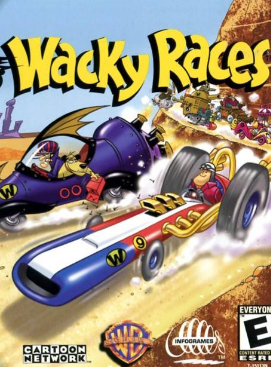
Wacky Races is a racing video game developed by Appaloosa Interactive for PC and PlayStation and by Velez & Dubail for the Game Boy Color. It was published by Infogrames in 2000. An enhanced version of the game, called Wacky Races: Starring Dastardly and Muttley, was released for Dreamcast and PlayStation 2 in the same year.

Gold and Glory: The Road to El Dorado is an adventure video game developed by Revolution Software. An adaptation of the film The Road to El Dorado, it was released on Game Boy Color, Microsoft Windows and PlayStation.





















